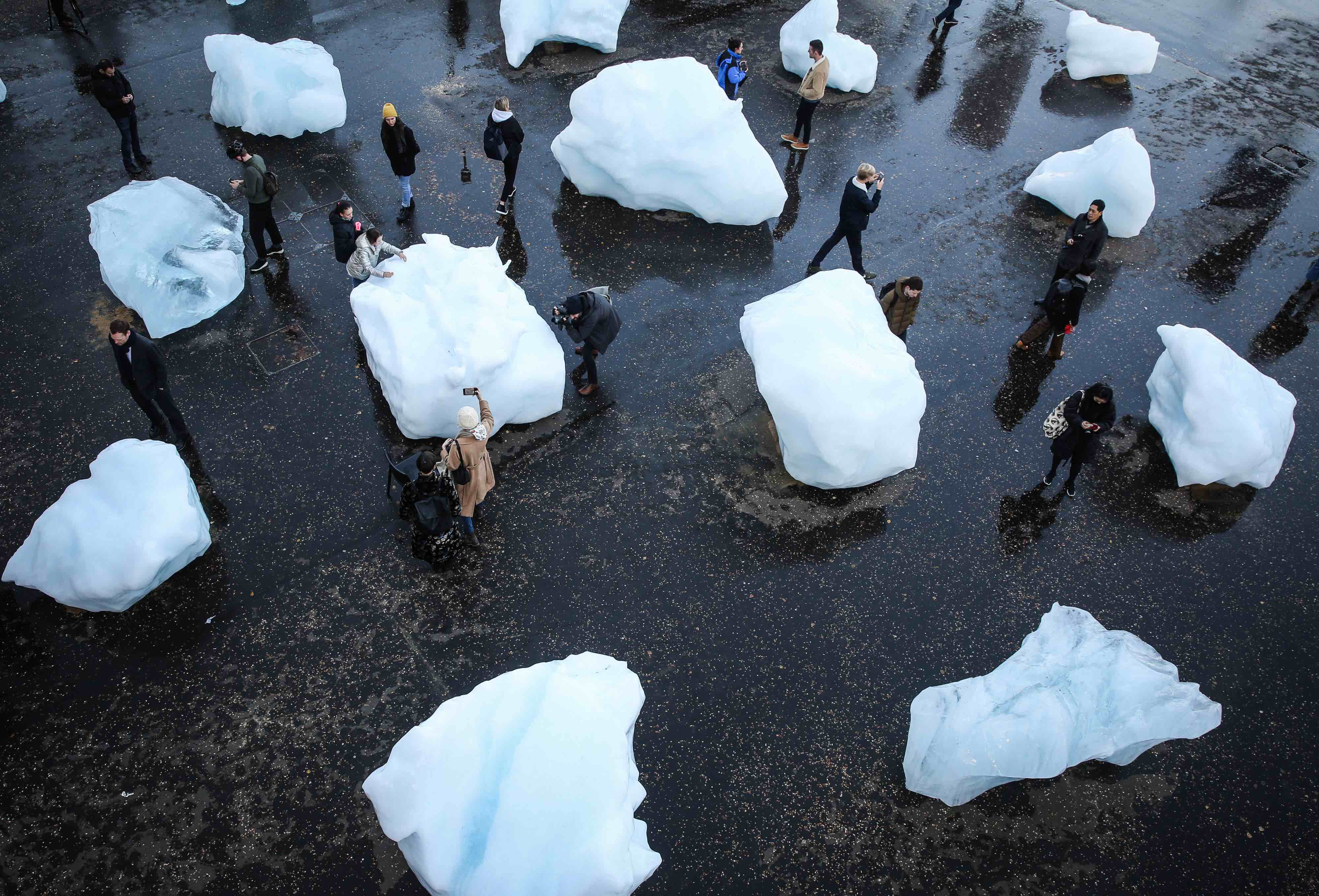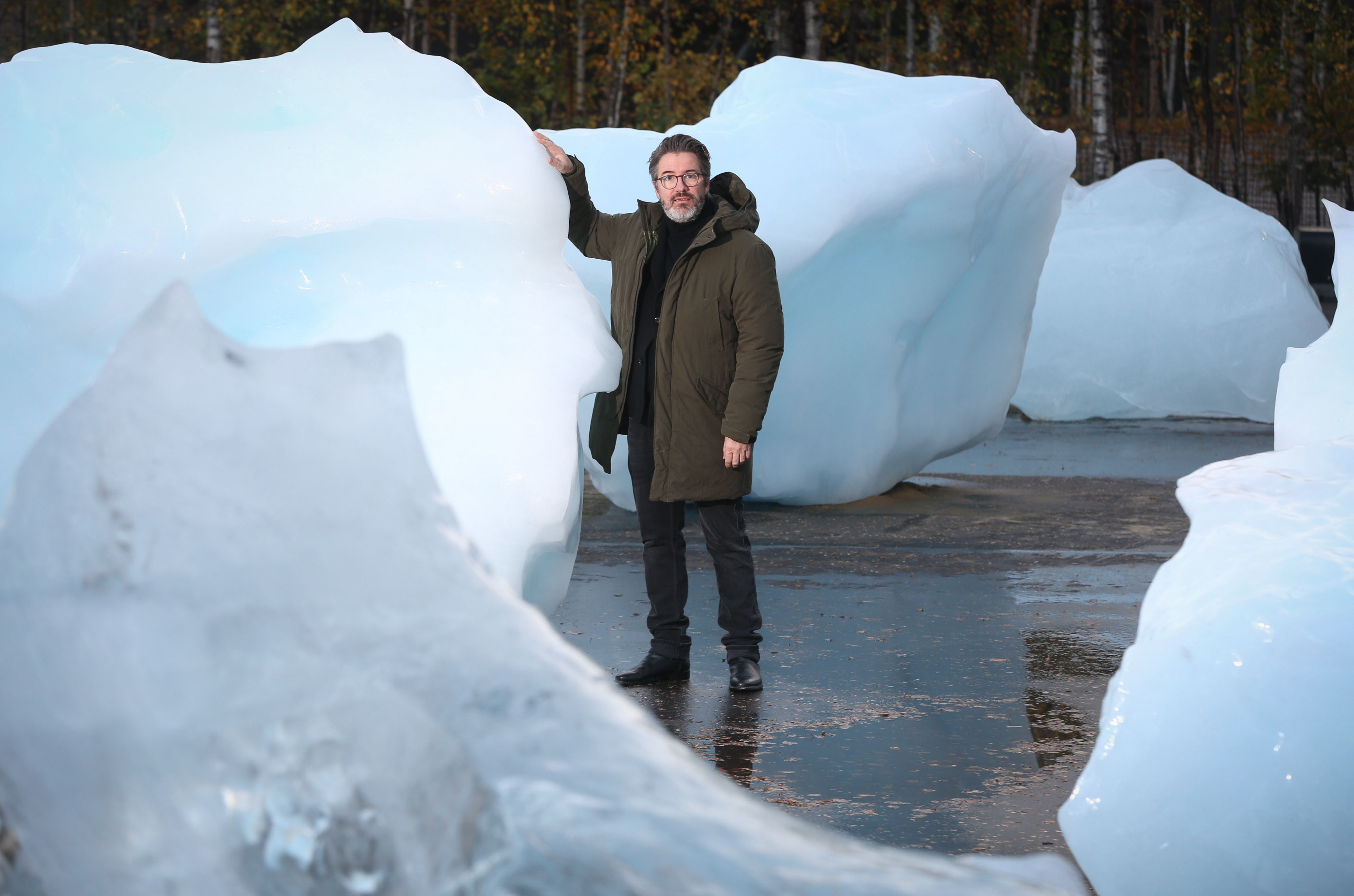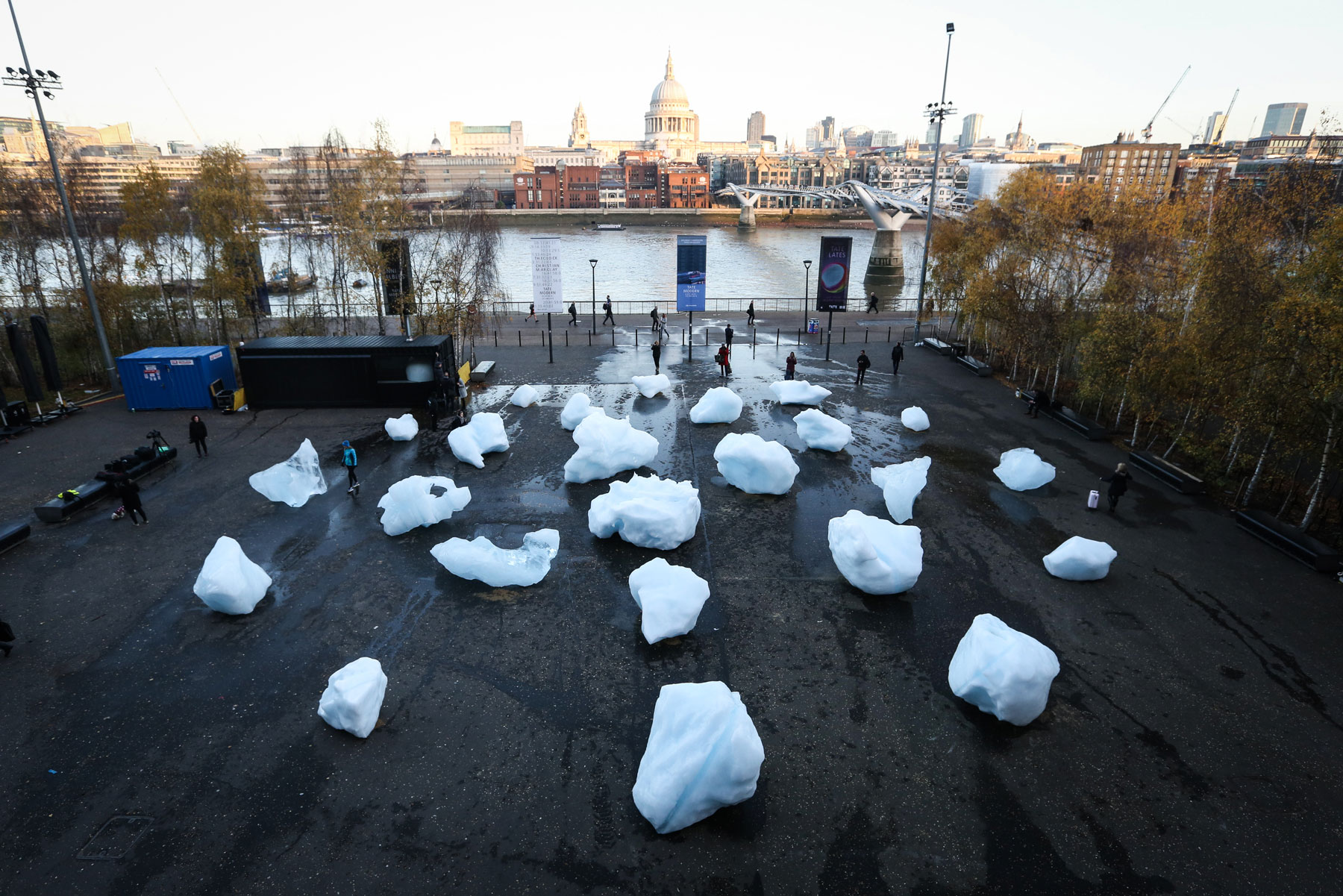
The latest iteration of Olafur Eliasson’s art-cum-activism piece, Ice Watch, was unveiled in two London locations earlier this month, to coincide with a major climate conference in Poland. The timing is also serendipitous given the damning new climate report released by US Congress, which had previously taken a hard line of climate change denial since Trump’s administration took charge. The report claims that the country’s land mass could shrink as much as 10 per cent by the end of the century, while the sheer amount of natural disasters that have plagued not only the USA but the world this year should be testament enough.
“Let’s transform climate knowledge into climate action”
Eliasson’s entire practice has been based around raising environmental awareness, often combining evocative installations with hard-hitting political messaging. Alongside his art, he has developed the Little Sun solar lamp, bringing sustainable energy and resources to developing communities. However, he is perhaps best known for the Weather Project (2003), which saw Tate Modern’s Turbine Hall filled with the glow of an enormous artificial sun and cloaked in manufactured mist. This year, he has placed twenty-four blocks of ice carved from the Nuup Kangerlua fjord in Greenland—where they were melting into the ocean after having been lost from the ice sheet—in front of the museum, with another six outside the Bloomberg building in the heart of the City.

Installed on 11 December, the blocks are intended to be on show “until they have melted”, which in itself is an ominous reading of how unpredictable our environmental future really is. “By enabling people to experience and actually touch the blocks of ice in this project, I hope we will connect people to their surroundings in a deeper way and inspire radical change,” the artist explains. “We must recognize that together we have the power to take individual actions and to push for systemic change. Let’s transform climate knowledge into climate action.”

The fact that the work is out in the open, in the path of people who might be taking a festive break from the usual routine, drastically increases the chances that people might stop and engage with these mysterious ice blocks. Eliasson is counting on it, with an accompanying website that explains the nuances of “land” and “sea” ice, and the terrifying implications of diminished ice sheets, as well as a variety of resources from leading experts in the field. By presenting an easily accessible and user-friendly platform which directly relates to what some might call an abstract sculpture, Eliasson is truly transcending the boundaries of art and activism.





